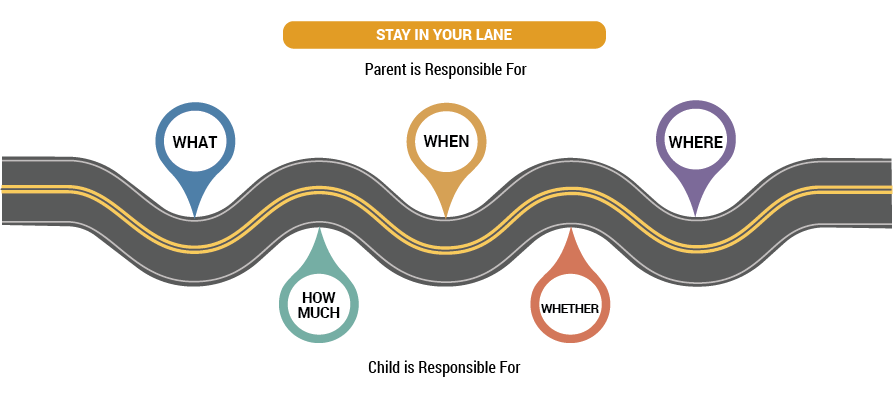The Satter Division Of Responsibility In Feeding
Following the Satter Division of Responsibility in Feeding (sDOR) can help alleviate this stress and set you and your child up for success.
What is the Division of Responsibility?
The Satter Division of Responsibility is endorsed by the Academy of Pediatrics as a proven approach for feeding children. This approach clearly outlines the adult’s role and child’s role in feeding. For many caregivers, learning their specific roles makes meal and snack experiences more enjoyable because it promotes a positive feeding relationship.
Why follow the Satter Division of Responsibility in Feeding?
This approach offers you a way out of power struggles, tantrums, and frustrations at eating times and allows you to focus on what really matters – being a loving, supportive caregiver to your child and trusting they are capable with eating.
When you take the lead and begin feeding your child this way, they will have the space and support they need to eat in a way that is right for them. Without interfering, you can trust your child to regulate food intake and learn to like new foods over time.
AS the adult, your job at meals and snacks is:
Choose the menu and select
what foods will be provided.
Select consistent eating times
when food will be provided.
Determine the eating environment
where food will be provided.
As an ADULT, you can trust the child at meals and snacks TO:
Determine how much to eat
of the food that is offered.
Decide whether or not to eat
the food that is offered.
“But, How Do I Get My Child to Eat?”
It’s a question we hear often—and the concern behind it is completely understandable. But the truth is, trying to “get” your child to eat isn’t the most helpful goal.
A better question is: “How can I support my child with their eating?”
Shifting from control to support can make all the difference. By following the Division of Responsibility in Feeding, mealtimes become more peaceful and positive—for everyone.
If you’ve pressured or interfered with your child’s eating in the past, it may take time for them to rebuild trust. But with consistency and patience, you’ll likely see real progress in how they eat and relate to food.
The Feeding Relationship Grows, Too
As your child grows, your feeding relationship with them will evolve. But the Division of Responsibility in Feeding remains just as important—from infancy through adolescence.
By consistently following this approach, you help your child build a positive, lifelong relationship with food. Over time, they’ll become more confident, capable, and competent with their eating.
Stay in Your Lane
Think of feeding your child like this: You’re in one lane, your child is in the other. The Division of Responsibility in Feeding is the double yellow line between you—it sets clear boundaries and keeps things on track.
When you stay in your lane (providing the what, when, and where of eating), and let your child stay in theirs (deciding whether and how much to eat), mealtimes will go more smoothly. You’re both free to enjoy the ride—together.






